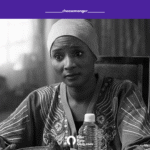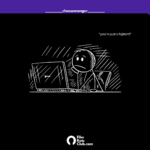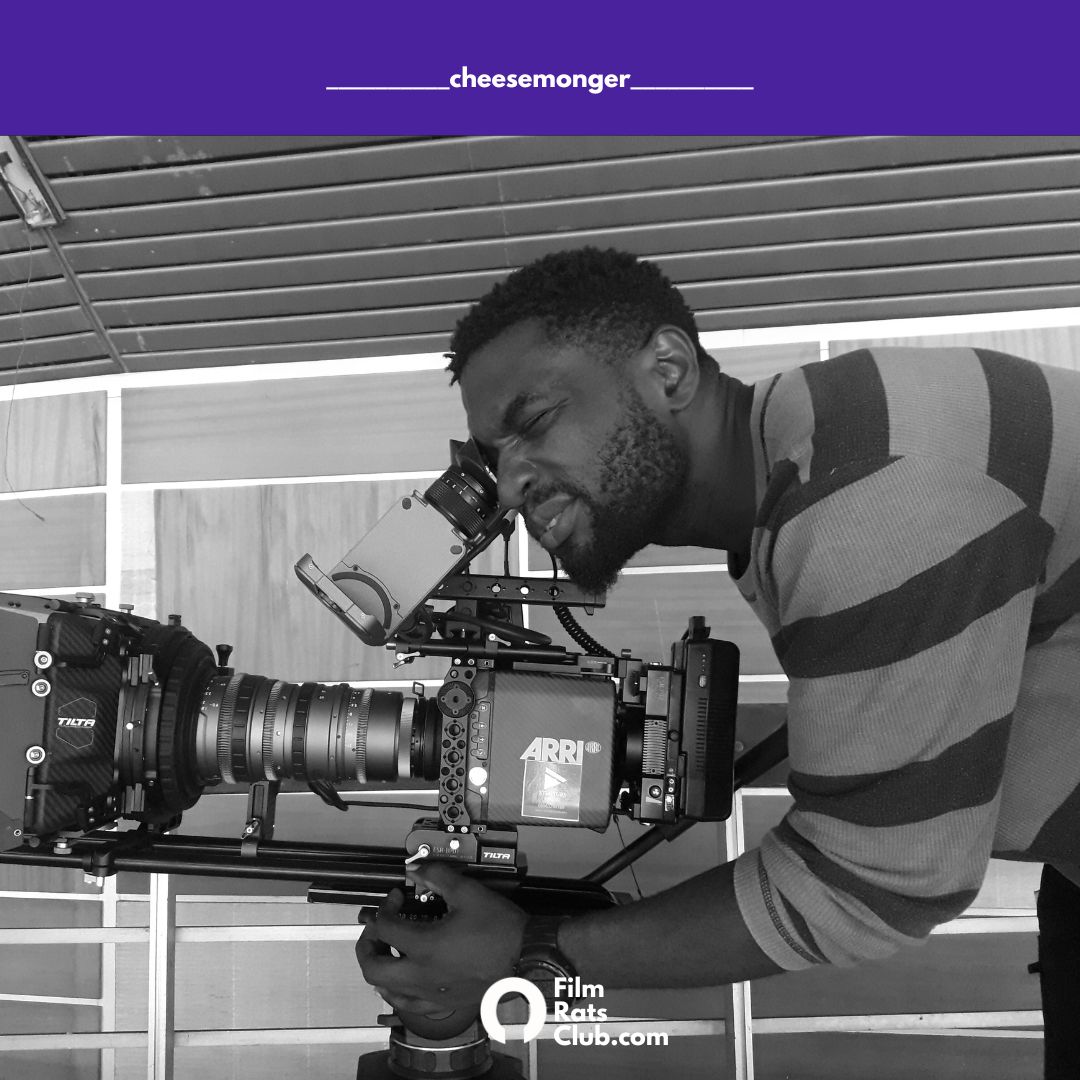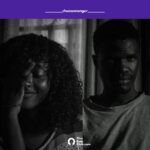By Oluwatomiloba Adejumobi
Some weekends ago, Moyosore Akinsete, the writer and director of Love, Olaitan and I had a conversation about her filmmaking journey and the production process of Love, Olaitan. I was sauntering through the restroom and corridor of the sparkling hospital while our conversation ensued. Our conversation lasted till I found myself moving along the buzzing road of Ikeja. We kept on while I savoured the beautiful scenery of Lagos and the alluring appeal of her story.
Spoilers ahead.
Love, Olaitan, which premiered on the 15th of March, 2025 on the director’s YouTube channel, is a unique film embedded in silence and deep emotions. It tells the story of a father-daughter relationship, mixed with love, bond, grief, and sadness. A coming of age story, it’s centred on Remilekun(Kezia Abiaka), a girl who loses her mother at a tender age, bonds with her father (KelvinMary Ndukwe), and sadly, loses him afterwards. With the director’s use of objects like the cushion and journal, the past, present and future experiences of these actors are represented by these mementos. While the cushion represents an unforgotten grief and loss, the writings, embedded in the journal, carries hope and optimism. This short film communicates the difficulty in handling grief and moving on with life. On discovering her father’s journal, Remilekun reads the letter he had written to his late wife (her mother), embraces his healing words, and musters the courage to live again. The journal, serving as a link between life and death, becomes an integral object in the lives of these actors. Love, Olaitan richly captures the sad experience of death, the grief that follows, and the hope that reignites after in the lives of people.
Tomi: I have always known you as a Law student through your YouTube channel where you post law-related videos. Last year, surprisingly, I saw your film, Love, Olaitan at The Annual Film Mischief’s official selection. So, I’m curious to know, why filmmaking?
Moyosore: Oh my God! That’s so sweet! I can’t believe that. My YouTube channel?! Creating the videos was basically my cross through law school and I’m glad you enjoyed it. I didn’t suddenly make the decision to make films. It was something I evolved with. I’ve always liked storytelling but the medium which I expressed it has always evolved through time. Growing up, my parents never really allowed us to watch TV. My mom prioritised story books and I loved them a lot. I had a neighbor then that used to tell us stories and before I knew it, I would start to entertain myself by writing these stories. I pushed a step further beyond writing prose stories by gathering children in my house and I would have them act out these stories that were in my head. On Sundays, while people had gone home and my parents alongside other workers were still in church, I would gather the pastor’s and workers’ children, give them roles to act.
As a teenager, I got more into books. I was the girl who always had books in her hands. That was how I got through Model College. My best friend then, would watch films and gist with me about them. That was the only interaction I had with film until I got to the university where I earned a bit more freedom to watch what I wanted to watch; my parents didn’t dictate my media consumption as usual. Through the youth arm of my church in university—a campus connect—, I started a drama club with two of my friends and it grew into something big. I would write, direct, and produce. It was like an outlet for me. While I got through Model College reading books, in University, it was writing and directing stage plays. This experience comforted and nurtured me. It made the tragedy of being a Law student bearable and school worth living.
Prior to graduation, I knew I didn’t feel fulfilled studying Law. The drama club I created helped me see that I loved bringing stories to life. This prompted me to start watching more movies. After Law school, I decided to face filmmaking. Although I wrote scripts for my drama club, I came across the EbonyLife Screenwriting Department which I attended during my National Youth Service Corps (NYSC). I pitched a story that didn’t get picked. So I made the story myself. That’s how I sort of started making films. I went on from this to the next one.
Storytelling has always been something I really enjoyed. It wasn’t something I thought to make a career out of. It just made life worth living for me. As a child, I never even said I was going to be a filmmaker. It was my love for storytelling that kept growing. It was never a moment of decision. I just grew into it.
Tomi: I would say your childhood was really fun despite not having access to watch films. How did your close ones respond to your interest in filmmaking?
Moyosore: There was no marker of my being into filmmaking. It’s always just a process. It was like a slippery slope that I was going on. And I carried my close people with me. I remember telling my friends I was going for the EbonyLife Screenwriting course and they cheered me on. I don’t think there was a structured response. It was just that I was going on a journey. I don’t think that they were shocked. I wasn’t shocked. I think all of us were going through our journey and they were going on with me.
Tomi: How did they respond to the recognition of your works?
Moyosore: Most of my friends are not in film. They don’t really know anything about the recognition of the work. They really don’t understand a lot of things. If you’re happy, we are happy, that was the general response. The response has always been positive and encouraging from their end. Most of the promotions that went into Love, Olaitan and Never Enough came from family and friends. They were the ones who carried it on their heads. Never Enough has about 7k views. I didn’t have any promotions for that. It was my friends and families that told friends of friends. Same with Love, Olaitan. We had a mini screening where some of my friends were invited to the house and we watched Love, Olaitan. I was very curious because they don’t care for films. They are mostly Lawyers. I was afraid that it was a silent film and they wouldn’t understand it much. I was happy to see that they actually liked it.
I don’t think anybody wakes up one day and decides that they want to do something. It’s usually a growing process and so your close people are usually with you while that process is going on. I think that’s how it’s always been for me. My parents wanted me to join Mount Zion Movies.
Tomi: Love, Olaitan is a deeply reflective film and I found it quite unique. Why did you decide to tell the story through this approach?
Moyosore: Thank you so much. My stomach flatters every time someone says something nice about Love, Olaitan. I will start from the title. Actually, it should have been titled A Girl on Her Couch. That was the title for the longest time. However, it just didn’t feel right. It was just a temporary title I interacted with. So I finally titled it Love, Olaitan because it is linked to the journal the dad wrote. Journals are instrumental for me. I love journals; same as my dad. My dad writes a lot. This kind of inspired it. It’s more of that particular piece of journaling being a link from her grave to his grave. Seeing that at the end of the day, she’s not alone in it. While she was a child who experienced grief in her dad’s death, he(her dad) had experienced the same when his wife died. What he had come to realize is that grief never really does leave you. It will always be present, but the more you give yourself to life, it becomes smaller. This sort of becomes the marking point for one of the thematic messages for Love, Olaitan. That’s the connecting point of him and then, her. He wrote the journal when she was a child and she discovered it in her adulthood. This shows that a lesson can be passed on from generation to generation. Someone else has walked your shoes to an extent, and so they can give a better perspective of what you’re experiencing. That’s basically what the title represented.
For the medium of storytelling, for me ideas come in barrages, so I don’t have an idea because of one thing. It’s usually influenced by the phase of life that I’m in and what I’m trying to learn. It being a silent film was very intentional. It sprung out of my first film, Never Enough, which I co-directed with my friend, Hope Eniayekan. My background in theatre has allowed me to learn more about dialogue and active performances. I’m also the kind of person who likes to express a lot through words, also I really love a good acting performance. That was my safe space. When I made Never Enough, bearing in mind that I had never made a film prior to this, I co-directed it with Hope and wrote the film as well. While this collaborative effort worked, which I am grateful for, I just couldn’t shake off the feeling that I had short changed myself in the sense where I felt like I wasn’t fully embracing storytelling as I desired to. What makes storytelling different from the books that I love is the camera. However, I felt so intimidated by it. I get fascinated by how subtle actions can only be caught in camera but I was also intimidated by it. After Never Enough I didn’t want to ever feel intimidated with the camera anyway.
I felt the need to face my fears of using a camera as a tool or storytelling. I was going to minor in my comfort and major in my discomfort. I majored in my comfort for my first film which was dialogue and active performance. But for Love, Olaitan I pledged to major in the part that was frightening and that is the visual storytelling. This was the key for me.
I wanted to make a film that would challenge me with visual storytelling. Beyond writing out my ideas everyday, I had to learn how to visually show the ideas in my head instead of writing out the story idea. I wrote about two to three films before then but I didn’t feel any of them. Then the story for Love, Olaitan came and it made sense. It fitted into the journey I currently was at — focusing on what made me afraid and that was the camera and its technicalities. I just didn’t want to feel afraid or uncomfortable anymore. I wanted to embrace the cinematic language, know them really well, and tell visual stories.
Tomi: Did you connect with this story in any way?
Moyosore: I definitely did connect with the story in all its forms. My connection to the story is like a coin. The first side of it is the bond and the second side is the loss. The bond is reflective of the relationship I have with my dad. I basically copied and pasted my life story. The relationship with my dad was very chill. In fact, most of the dad’s(KelvinMary Ndukwe) costumes were my dad’s. The part of the loss is my fear. One of my deepest fears is losing any of my nuclear family members. I never thought that it’s something I will have to experience anytime soon. Writing Love, Olaitan , was a form of emotional purgatory for myself where I felt like I was facing my fear of losing someone I love. That’s how I connected with the story.
Tomi: What was it like watching the nature of your relationship with your dad replay through the lens of the actors?
Moyosore: Watching it through the lens of the actors was very interesting. This relationship was actually set in the script. There was no time to feel mushy during the film production because we had to shoot multiple times. The writing process was more of my sacred moment, there was not much time to reminisce on set.
The writing process was quite reflective for me. It made me appreciate a lot of things. I reflected on different ways my dad had tried to show up for me and being my dad. I was deeply appreciative of him. I had to go back to him to thank him. Being on set and watching it, especially the mathematics scene made me also reminisce about this period with my dad.
Tomi: I would like to know more about your writing process.
Moyosore: I wanted to challenge myself on visual storytelling, so I looked for ideas that I could tell visually. I had written about two to three different ideas but they didn’t fit right into what I wanted. For Love, Olaitan I had just watched an anthology of films and they had hit deep. When I watch movies that make me feel, I am inspired to create. I never knew those films hit deep until I just couldn’t sleep. I remember it was August 23, 2023. The name of the film at the time was A Girl on Her Couch. I had just thought to talk about a father, his daughter, and an object that binds them together— a couch. I tried to see how I could make that work. I vomited everything that was in my head that night. My writing process is weird. I think I am generally lazy so I don’t struggle with ideas. Thanks be to God. I don’t try to put myself in a box to write something. An idea would pour down in my brain and I just have to vomit it out immediately. And when I vomit it out, I have to think of fleshing it out— brainstorming and making sure it’s good. So, that night I just had to keep writing. It was in a prose form. I wrote everything down and slept. I did not start writing because I had never written a silent film. All my stage plays were dialogue. I could have just gone online to search for silent films but I didn’t think of it. So, when I had the idea down, I started to read books. I read Chimanda Adiche’s Notes on Grief, Yewande Omotosho’s An Unusual Grief and Medium articles of people talking about their experiences.
Writing about my bond with my dad would not be hard for me, but for grief I was afraid of it. I was afraid of pouring myself into it but I knew that I had to open myself up for me to write something. If I don’t feel it, I can’t help people to feel it. How I could face my fears was by reading about it. I talked to some friends who had experienced grief and one of them confronted me on why I would want to write about grief if I had never experienced it. This made me experience imposter syndrome as I started questioning my attempt to write on something I had never experienced. But I countered the thoughts. Never Enough, my first film was about emotional abuse in a relationship, but I have never been emotionally abused in a relationship at least to the best of my knowledge. Writing isn’t limited to what you’ve experienced. What makes you a creative writer is your ability to put yourself in other people’s shoes, cast yourself aside, and feel things. That’s a super strength I think writers have. So I read all of these texts for almost a month and surrounded myself with materials around parental relationships and grief. Sometimes, I would use Twitter (X)’s search engine to get stories on people’s real life experiences on grief and their bonds with their parents. I did that and wrote the first draft. I started with the bond part. I laid a few foundations on the life of my character, their background stories, I probed so many questions about the story. What’s the dad’s story before he had his child?, what’s the story behind the couch?, what’s the relationship the day had with the mom? Why did the mother die? How did I influence the dad’s relationship with his daughter? How did their relationship grow? All of these didn’t show on screen but they helped me build the story.
And then for the grief part, I wanted to show how life continues after death. Grief or not, life continues. I also wanted to show the small and big moments and how they influenced her life decisions. I wrote the script. It felt right, I knew I had something to say. Then, I told Hope in September and sent the script to her. We went through the script together and through each line, probing and editing. Then, I sent it to a friend of mine who is a writer to help proofread. By November, December, I was sure we had a script and then we started to reach out to people.
Tomi: What was your experience working with your crew to achieve your goal for the visuals?
Moyosore: What has always been the most important thing for people is meeting other people who are willing to do the work, not just those who know how to do it. I wanted to work with people who were patient, kind, and hardworking. I wanted people I could be comfortable enough to express myself to. For Hope, my friend, she was a talent. I couldn’t do without her. The production designer was also willing to work, stretch herself and learn. The production design was really important for the story and this particular production designer did her job best. The D.O.P was an amazing guy. He was so easy to work with. Same with the camera operator. The sound designer, Moses, was also on point. The person who worked on the colour grade was amazing as well. The voice over was also perfectly done. The person who worked on it was my friend. He however, didn’t approach this project with levity. He was very determined and intentional. He had this depth of voice that made him sound like the dad. I was very interested in people who connected with the script one way or the other and were willing to work. It was a short film, we were on a tight budget and I couldn’t pay anyone; it was all about their interest in this film. I really loved working with everybody.
Tomi: Did you encounter any major challenges during the filmmaking process?
Moyosore: A major challenge we encounter in filmmaking has always been with time and budget. Almost all the props in the house were rented and they needed to be returned the same day. So we had to shoot almost ten scenes in a day and get the rented props back. We didn’t have much. There was that time crunch and it was a major challenge for us. Also, the editing process was a chaotic one. I lost my mind so many times that I wanted to give up. I’ve never edited a film before and it burned me out so bad.
Tomi: How do you envision your filmmaking journey evolving over the next two years?
Moyosore: I do consider myself to be in the foundation phase of my filmmaking journey. I hope to learn a lot of the basic tools and figure out my voice. In two years, I do envision having a better grasp of cinematic language. I’m currently nurturing the idea of creating a feature film. It may or may not happen in two years. Currently, I’m just in the phase of equipping myself.








6 thoughts on “MOYOSORE AKINSETE ON CONQUERING HER STORYTELLING FEARS AND TAKING A BOLD STEP WITH “LOVE OLAITAN””
Kurumsal Scriptler
Tur Scripti
Pretty! This has been a really wonderful post. Many thanks for providing these details.
I am truly thankful to the owner of this web site who has shared this fantastic piece of writing at at this place.
icra müdürlüğü sınavı 2025
icra müdürlüğü sınavı 2025